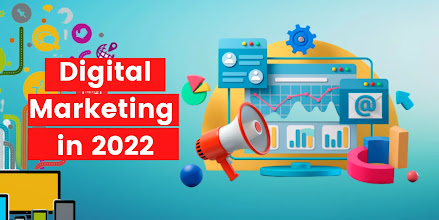Three Ps to Monitoring Your Digital Ecosystem
Three Ps to Monitoring Your Digital Ecosystem
The most important aspect of assessing the success of your digital marketing campaign is knowing your customer's online behavior and the digital environment. There's plenty of discussion concerning the value of statistics in the day and age of Big Data, and with the right reason.
Analytics are crucial for ensuring that digital marketing is successful. If you don't understand the metrics you're using or why all the data you collect on the planet won't make an impact, no matter the amount of information you gather. The numbers will be of little value if you don't know what you're trying to achieve by implementing your digital strategy.
We've probably heard it previously, but it boils down to your clients in the current digital age. The path you've laid out - or, perhaps more important, you've neglected to design as the basis on which everything else is created. Your customers and their journeys define your online ecosystem.
How to Monitor Your Digital Ecosystem
To bring you up to speed with the three Ps of monitoring your digital ecosystem related to collecting valuable information about your customers, we have created another infographic to help you learn. Have fun analyzing!
Thinking about all the parts that make up a successful digital marketing plan isn't an easy task. There's plenty to consider that needs to be considered, and if your company isn't staying current with the current trends, you could get behind your competition within the quick blink of an eye.
We're here to help, and we understand that competing can be tough. We're here to inform you that focusing on) clients and their experience, the experience of your customers, and) the three Ps of digital marketing can go a long way to make things easier for you and your team to manage. Here are the 3 Ps of monitoring your digital ecosystem without further delay.
Digital properties represent
The first letter is property. Your digital properties represent your brand's face in the web world. I prefer to think of websites as a virtual representation of a huge office building. If you walk into the office of a business, it will have a massive influence on how you perceive the company.
The same is true for a website. The website, typically the first experience that a potential client encounters with your brand can leave a lasting positive negative impression on the visitors.
The second 3 is that your brand must be involved with three distinct types of digital properties. We discussed sites, and they are percent controlled by the brands who own the websites. It is a dynamic process between brands and the users they engage with. Therefore they can only be handled in part. Third-party review sites are important sites that third parties entirely manage.
The most important aspect of this first P is knowing the things you can control and the things you can affect and the distinction between these two crucial elements of managing the digital environment.
The second P stands for path, the route that will help a client finish the task you've defined for them. The two Ps above are inextricably linked since, before you can lay out your path, you need to determine which products your customers are engaging with.
Imagine it as a drive-thru restaurant or fast-food restaurant. You are likely attracted to a fast-food establishment because of some advertising. The first contact is via an intercom where you can place your order. You'll drive to the first drive-thru window, where you make your payment, and then go to the second drive-thru to pick up your food.
There's a clear, repeatable route that customers must follow when using the drive-through. It should be the same for customers who want to interact with your online properties.
Your goal should be to take your customers to the most attractive location that you have (hopefully on your site) and then guide them to a clear "buy area" (like the pay-per-click window in the drive-thru).
Finally, as the drive-thru employee hands your food with a huge smile and a warm thank you, your customer's experience with your brand must be maintained after making purchases. Keep in mind that loyal brand advocates and repeat business are crucial to the future of your business.
Connects to numbers and data
The point where all we've discussed thus far connects to numbers and data is right here, at the last P: reason. The path and the properties all depend on the primary goal that, in the majority of instances, is the reason why you're there.
If, for example, the primary purpose of your website is to turn visitors into customers, then you are aware of precisely what you must evaluate: the number of visitors and sales your site receives.
If you're running a marketing campaign designed to earn good reviews and create a "buzz" around your business and brand, you must be tracking the proportion of positive and negative reviews this campaign produces.
Knowing that the 3 Ps are a fantastic way to grasp a handle on your company's digital ecosystem and start tracking those metrics that matter most to you. It can be difficult to determine what metrics to track and what to measure in today's crowded, hectic digital world.
The three Ps will make it easier. Optimize and analyze your properties, define a route to your clients, and align the metrics you track to the overall goal of your business.
It's the final word for our infographic on the digital ecosystem Here's the complete of it in its entirety together with embedded code if you'd like to share it and blog on it for your website.




Comments
Post a Comment